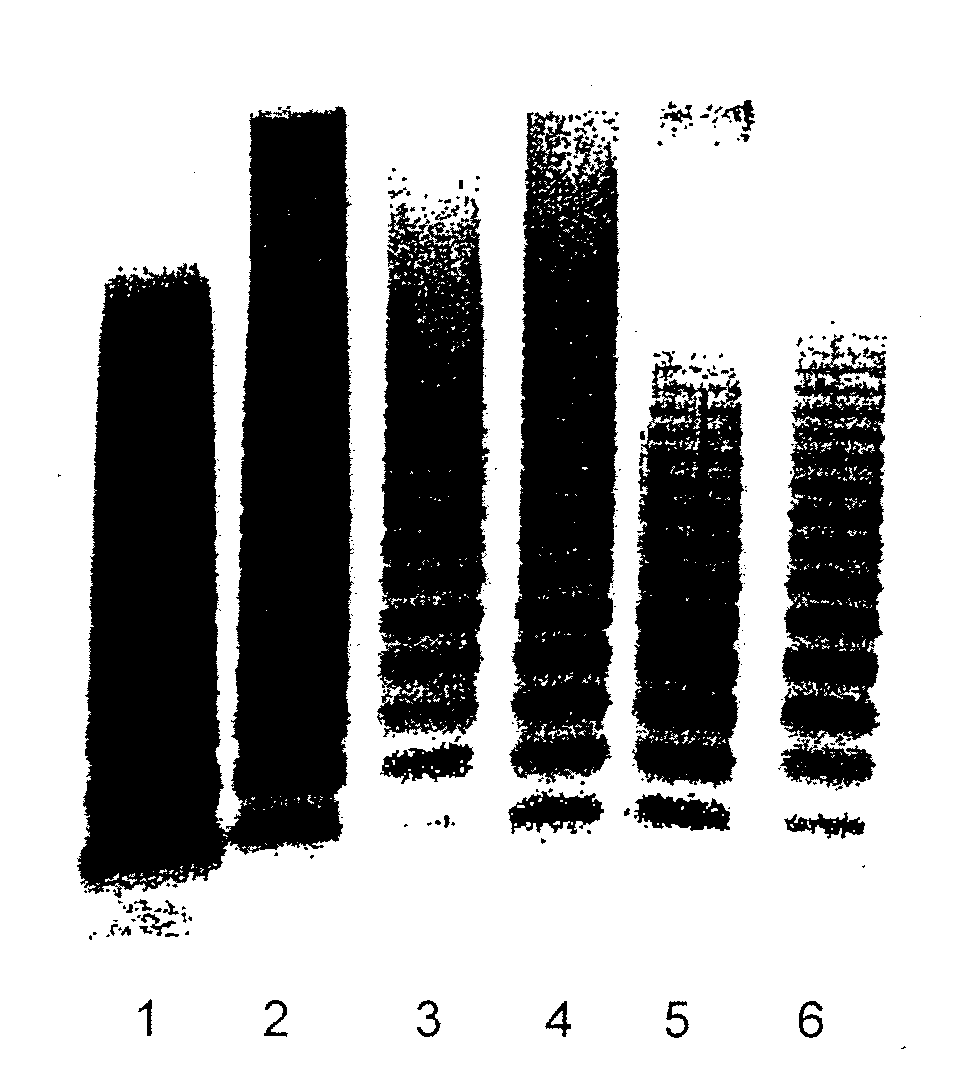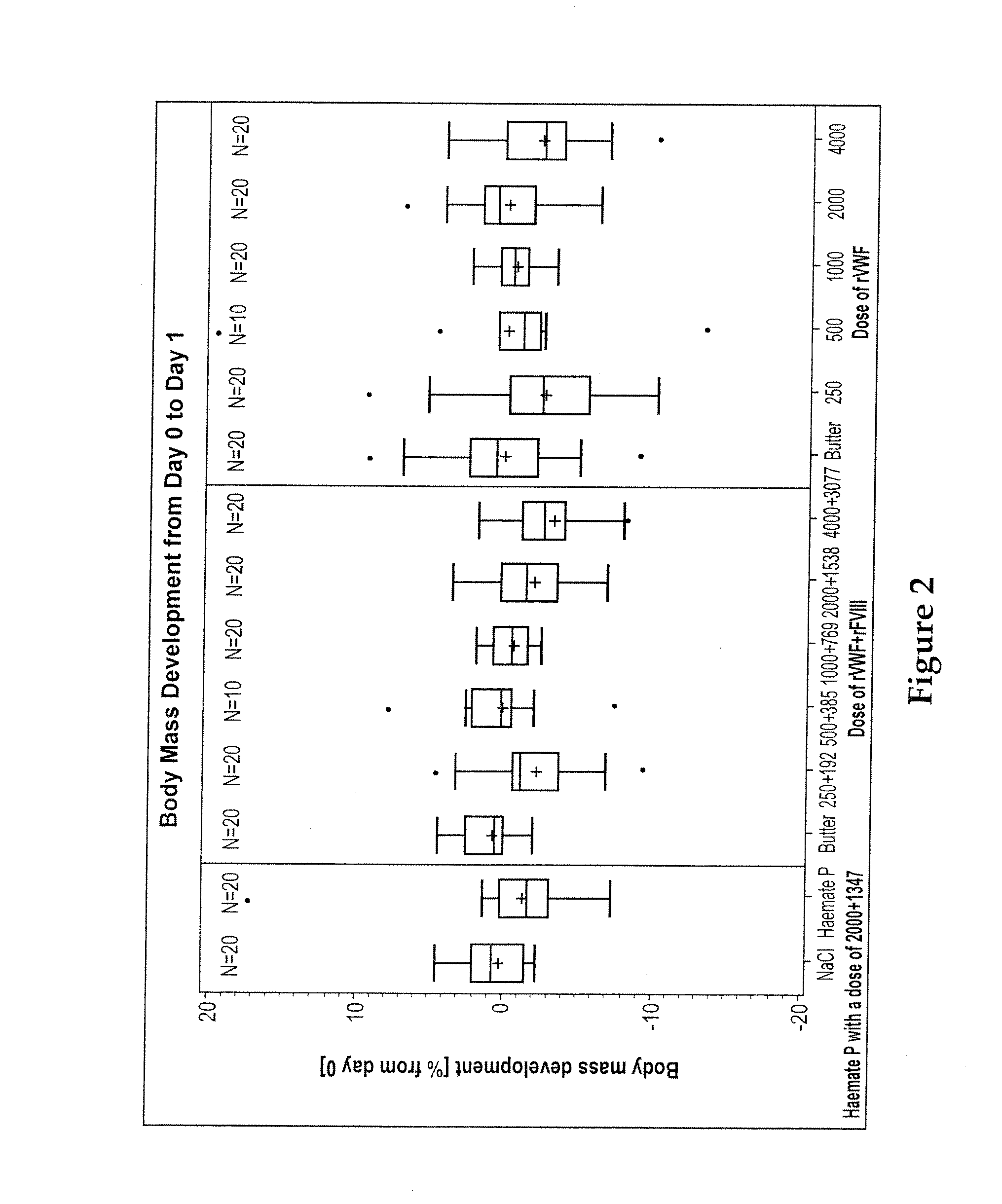Models of thrombotic thrombocytopenic purpura and methods of use thereof
a mouse model and thrombocytopenic purpura technology, applied in the field of development of a mouse model of thrombotic thrombocytopenic purpura, to achieve the effects of reducing platelet levels, increasing blood creatinine kinase levels, and high molecular weigh
- Summary
- Abstract
- Description
- Claims
- Application Information
AI Technical Summary
Benefits of technology
Problems solved by technology
Method used
Image
Examples
example 1
Acute Toxicity of Human Recombinant Von Willebrand Factor (RVWF) Alone or in Combination with Human Recombinant Factor VIII (RFVIII) in C57BL / 6J Mice
[0229]The aim of the study was to determine the acute toxicity profile of recombinant VWF (rVWF) alone or in combination with recombinant factor VIII (rFVIII) (ADVATE®, Baxter) after a single intravenous injection (clinical application route) in C57BL / 6J mice. The study was carried out to determine if thrombotic events, especially microvascular, could occur after the administration of the test agents. Mice of the C57BL / 6J strain were chosen for this study because they are the genetic background strain to VWF-deficient and ADAMTS13-deficient mice used in parallel acute toxicity studies (see Examples 2 and 3).
[0230]Recombinant VWF, administered alone or in combination with rFVIII, was compared with a human plasma-derived VWF-FVIII preparation (HAEMATE® P), the corresponding solution buffers (vehicle control), and isotonic saline (negative...
example 2
Acute Toxicity of Human Recombinant Von Willebrand Factor (RVWF) Alone or in Combination with Human Recombinant Factor VIII (RFVIII) in VWF-Deficient Mice
[0245]The aim of the study was to determine the acute toxicity of rVWF alone or in combination with rFVIII (ADVATE®, Baxter) after a single intravenous injection (clinical application route) in VWF-deficient mice. VWF-deficient mice (Baxter) were chosen for the study because this transgenic strain mimics conditions in patients who lack VWF.
[0246]One lot of rVWF, administered alone or in combination with rFVIII (ADVATE®), was compared with a plasma-derived VWF-FVIII preparation (HAEMATE® P), the corresponding solution buffers (vehicle control), and isotonic saline (negative control). Recombinant VWF was tested alone at five dose levels: 4000, 2000, 1000, 500, and 250 ristocetin cofactor (RCo) U / kg body weight (BW), or in combination with rFVIII also at five doses. In the combined administration, the doses of rVWF were the same as in...
example 3
Acute Toxicity of Human Recombinant Von Willebrand Factor (RVWF) Alone or in Combination with Human Recombinant Factor VIII (RFVIII) in ADAMTS13-Deficient Mice
[0255]The aim of the study was to determine the acute toxicity of rVWF alone or in combination with rFVIII (ADVATE®, Baxter) after a single intravenous injection (clinical application route) in ADAMTS13-deficient mice (Baxter). ADAMTS13 is a protease that cleaves VWF to reduce high-molecular-weight multimers. Thus, ADAMTS13 knock-out mice are not able to cleave the rVWF subunit at Tyr1605-MET1606 because of their lack of ADAMTS13. Consequently, these mice cannot break down the ultra-large VWF multimers, resulting in microvascular thrombosis in multiple organs. Thus, they should be susceptible to harmful effects of rVWF at a much lower dose than their counterpart controls. ADAMTS13-deficient mice were chosen for the study because this transgenic strain mimics the condition in patients who lack the ADAMTS13-cleavage protease for...
PUM
| Property | Measurement | Unit |
|---|---|---|
| molecular mass | aaaaa | aaaaa |
| molecular mass | aaaaa | aaaaa |
| thickness | aaaaa | aaaaa |
Abstract
Description
Claims
Application Information
 Login to View More
Login to View More - R&D
- Intellectual Property
- Life Sciences
- Materials
- Tech Scout
- Unparalleled Data Quality
- Higher Quality Content
- 60% Fewer Hallucinations
Browse by: Latest US Patents, China's latest patents, Technical Efficacy Thesaurus, Application Domain, Technology Topic, Popular Technical Reports.
© 2025 PatSnap. All rights reserved.Legal|Privacy policy|Modern Slavery Act Transparency Statement|Sitemap|About US| Contact US: help@patsnap.com



